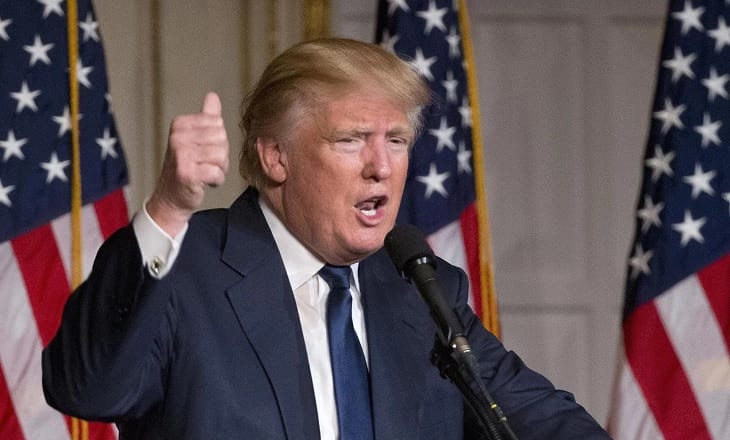This article is written by Ipek Ozkardeskaya, Senior Market Analyst at FCA regulated broker London Capital Group Holdings plc (LON:LCG).

Ipek Ozkardeskaya, LCG
Donald Trump’s election as the 45th President of the United States has triggered an unprecedented rally in the US financial markets and the thrill spread over global asset trading.
Traders bought the anti-establishment and sold the multi-year long low rate, zero-inflation impasse.
As such, Trump’s victory benefited US stocks and particularly the big US banks. MSCI US Banks index rallied nearly 10% on prospects of higher interest rates. The US sovereign bonds were aggressively sold and the US sovereign curve shifted significantly higher to match the rise in US inflation expectations. The US 10-year yields jumped to 2.60% in December. The overall squeeze was nothing else but the pricing that reflected the end of a long lasting and devastating low rate era.
Trump gave the markets the energy boost they needed. The 9th of November marked the first day of the anti-establishment.
Face to the grand enthusiasm, the Federal Reserve (Fed) has immediately taken its guard. The Fed raised interest rates by 25 basis points in December and pledged to tighten the US’ monetary policy by several interest rate hikes per year, which are predicted to sum up to 3% by the end of 2019.
Is the Trump rally sustainable?
Trump promised Americans to make ‘America Great Again’. Although the slogan offered Trump a surprise victory in the presidential race, first signs of exhaustion have manifested as investors craved for crispy details on how Trump would make America great again.
Still, Donald Trump didn’t let the post-election melancholy slump the mood, as he made an impressively speedy start in his new position. Even before he officially became president, he took credit for preventing US companies from delocalising and saving thousands of jobs.
In his first day in office, he withdrew from the Trans Pacific Partnership (TPP) agreement. There is no doubt that the North American Free Trade Agreement (NAFTA) and the Regional Comprehensive Economic Partnership (RCEP) will soon be renegotiated and potentially abandoned.
He cleared the way for the controversial Keystone XL and Dakota Access oil pipelines to develop the energy infrastructure, which had been compromised by the former President Obama’s environmental plans.
And finally, as his distinctive signature, Trump ordered the construction of the wall between Mexico and the US, and instructed the reinforcement of immigration enforcement officers to underprop deportations.
The series of unconventional actions reversed the sluggish mood in the financial markets. Donald Trump’s first week in the office triggered a new wave of enthusiasm. The US stocks rallied to record high levels.
On pins and needles
The power demonstration has been entertaining for some, worrisome for others, but the truth is Donald Trump is now expected to announce a serious, concrete series of plans on how he will proceed to boost economic growth in the country beyond the short-term, abrupt measures. Thrashing the established system is one thing, replacing it with a more efficient one is another.
As the highly mediatized episode of Trump’s inaugural comes to an end, concrete questions will regurgitate. Besides geopolitical issues that we will leave aside in this short article, many questions regarding the economic matters are still up in the air.
As the US departs from the international treaties, what will the US’ new trade policy be?
How will the rising US protectionism impact the world’s leading economy’s relationship with the rest of the world?
Would international US companies be impacted by the US’ aggressive policies? If the answer is yes, then by how much?
Does Trump have a sustainable plan for fiscal policy?
What are the details of the government’s new spending plans?
What is the budget and how will the additional expenses be financed?
Of course, every change brings along new opportunities. In 2017 and onwards, vigilant sector selection and meticulous stock picking will be the winning trick.
Among the most popular sectors of the moment, we cite the financials, industrials and technology.
We remain neutral on pharmaceuticals due to potential two-sided volatility on the revocation and replacement of the Obamacare.
We recommend additional caution for businesses with high foreign currency exposure, given that a further rise in the US dollar could weigh on overseas revenues and be negatively reflected in stock prices of companies operating abroad.
